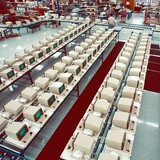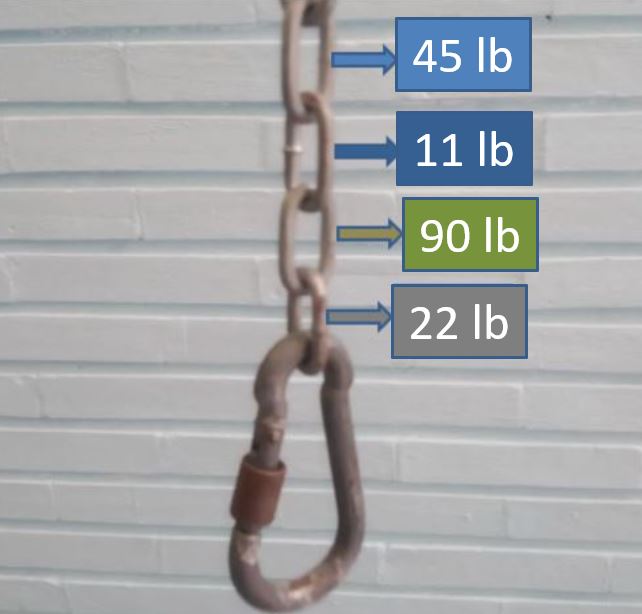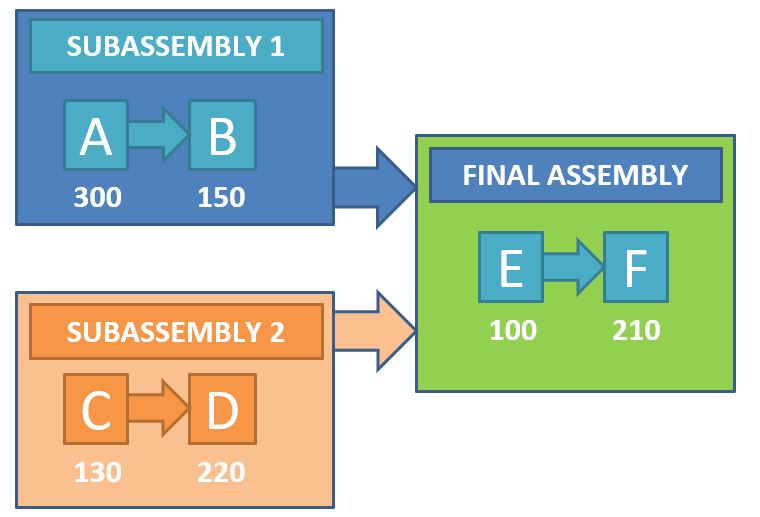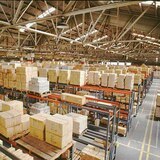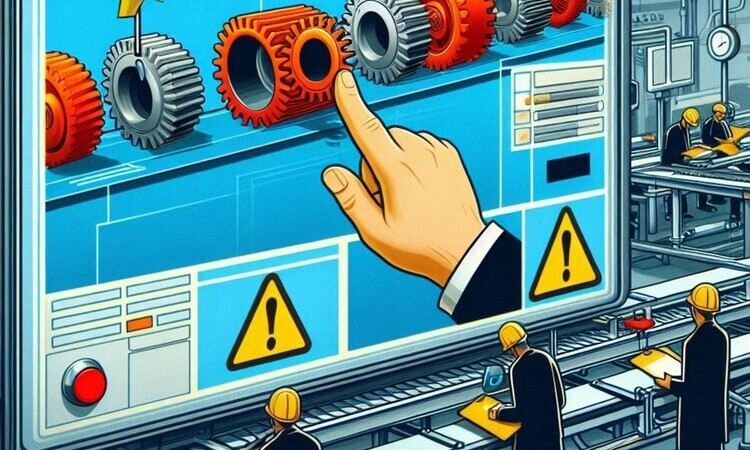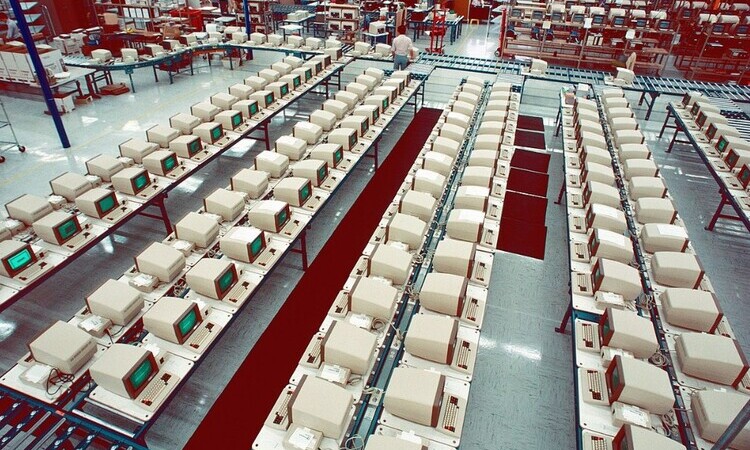Theory of Constraints - TOC - Introduction
Theory of constraints was developped by israeli physician Eliyahu M. Goldratt through his book "The Goal" written in 1984. This theory points that each production system (also applicable to each management system) is limited by a series of constraints wich prevent the organization to reach the objetives set. It establishes that in every system there is at least one constraint and through this theory we can localize it and restructure all the organization around it.
A Chain is as strong as the weakest link
Let's imagine the following chain that is shown in the picture. We can see that it has four links:
- First link: 45 lb.
- Second link: 11 lb.
- Third link: 90 lb.
- Fourth link: 22 lb.
How much weight does the chain support?
We can see that our chain's maximum weight allowed is limited by the weakest link, the one that supports 11 lb. With more than 11 lb, the chain will break.
What would happen if we try to increase the load capacity of the fourth link from 22 to 32 lb?
This is what would happen: NOTHING. We need to take into account that our constraint is not there, it is located in the second link of 11 lb. Having said that, that effort of trying to improve locally load capacity of fourth link would be useless for increasing the whole load capacity of the chain.
How to introduce this in a production process?
Let's imagine a production process that has three work stations in which cycle times are as follows:
- Station 1: 10 seconds/part
- Station 2: 25 seconds/part
- Station 3: 20 seconds/part
If I wanted to increase capacity of the system I will need to focus all my efforts in station number 2, which is the constraint. Every improvement locally optimized in stations 1 and 3 is a mirage, which will imply zero improvement in the whole system.
System constraints, bottlenecks and differences
From production perspective, constraint can be defined as the resource which limits the production output of the system, the obstacle that prevents the organization to reach his goal. It's very important to have in mind the following statement: "Each second wasted in constraint, is a second wasted in whole production system output".
Bottleneck is defined as the resource which has a production capacity equal or lower than the customer demand.
In a production system we can find multiple bottlenecks, however there is always one single constraint. Constraint could be a bottleneck, but a bottleneck does not necessarily have to be a constraint.
In order to understand better these two concepts, let's imagine a factory which manufactures one reference for a customer with a demand of 200 units per week.
The manufacturing process is as follows (see image)
In the area of Subassembly 1, a series of components are picked up and go through the stations:
- A, with a capacity of 300 parts/week.
- Afterward goes to B, with a production capacity of 150 parts/week. Intermediate product from B, goes directly to Final Assembly.
In the area of Subassembly 2, othere components are picked up and go through stations:
- C, with a production capacity of 130 parts/week.
- Afterwards goes to D, with a production capacity of 220 parts/week. Semi-finished product from D goes directly to Final Assembly.
In the area of Final Assembly, semi-finished products that come from Subassembly 1 and 2 are picked up and go to stations:
- E, with a production capacity of 100 parts/week.
- Afterwards goes to F, with a production capacity of 210 parts/week.
In this example, we can see that there will be 3 bottlenecks (those with capacity lower than the customer demand whih is 200 parts per week)
- B, with 150 parts/week
- C, with 130 parts/week
- E, with 100 parts/week
The constraint of this system will be E, which is the one that limits production to 100 parts per week. There's no point in improving the bottlenecks of B and C if E is not optimized, on the contrary, this will generate overproduction and stock awaiting to be processed by E station, with all the inefficiencies which this implies.
As the station is starts to be optimized, very likely station C will become the constraint, and after optimizing this one, the constraint will go to B.
The five step process
The methodology used by the Theory of Constraints consist of 5 steps:
- Identify the Constraint
- Exploit the Constraint
- Subordinate all to the Constraint
- Elevate Performance of the Constraint
- Repeat the Process in cyclical manner
First step: Identifying the constraint
The system constraint must be correctly identified to focus all the efforts in its optimization so that the company objetives can be achieved as soon as possible.
In the following post: Identifying the constraint - TOC, its described in accurate manner the method to correctly identify the constraint in every system.
Second step: Exploiting the constraint
Once identified, it must be ensured that the constraint resource works at full capacity without stops or inefficiencies.
In the following post: Exploting de constraint - TOC, it's shown in detail how to perform this second step.
Third step: Subordinating all to the Constraint
As you may know, the resources which are not constraint, have a higher production capacity, so they should not work at 100% capacity to avoid high amount of stocks in the Work-In-Process areas, but also needs to be ensured that the are always "feeding" the constraint to avoid that this one stops due to lack fo components of previous work stations.
In the post: Subordinating all to the Constraint - TOC, this is explained in more detail.
Fourth step: Elevating the performance of the constraint
This fourth step consist of elevating the performance which has our constraint by applying processes improvement, investment in tooling, better tools, etc.
For more detail check post: Elevating the performance of the constraint - TOC.
Fiveth step: Repeat the Process in cyclical manner
It can happen that after the fourth step, the constraint has moved and its not anymore the station which we have optimized. Due to this reason now we will have a new constraint and we will need to restart again in the first step to follow continuous improvement.
List of post published related to Theory of Constraints
Below you can access to all the post published related to the Theory of Constraints:
Theory of Constraints - TOC - Introduction
Identifying the constraint - TOC
Exploiting the Constraint - TOC


